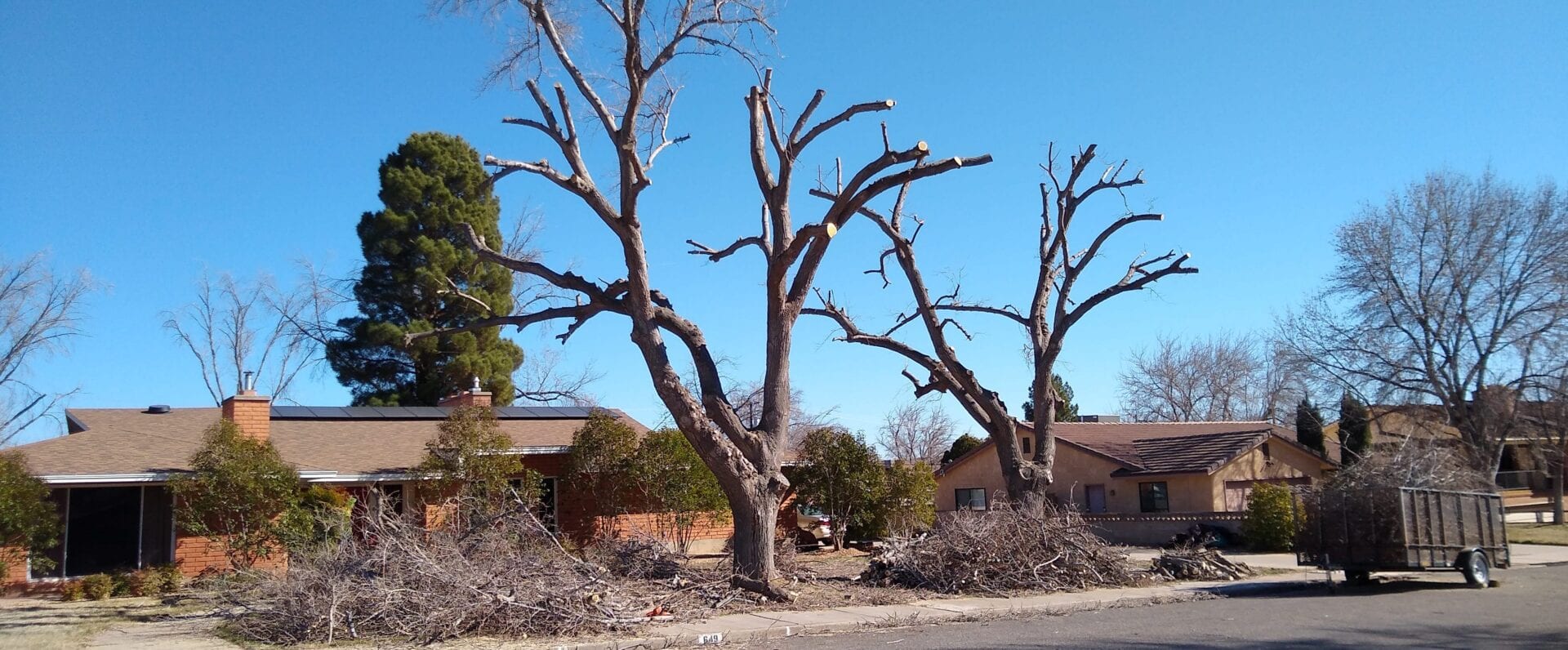
Why Not to Top – Eight Good Reasons
Heading cuts have been used to reduce the height of a tree. This is an inappropriate method of pruning. Topping will lead to branch dieback, decay, unstable sprout production. This results in a potentially hazardous situation once the sprouts become large and heavy. We have compiled 8 reasons to avoid topping your trees.
Starvation
Good pruning practices do not remove more than one-fourth of the canopy in any given year. It has been generally accepted that this practice does not seriously interfere with the ability of tree to produce sugars for itself through photosynthesis. “Topping” removes much of the tree’s canopy. This upsets the trees root-to-shoot ratio. Temporarily cutting off its ability to produce sugars that the rest of the tree needs for survival.
Shock
A tree canopy is like an umbrella. This covers and protects much of the tree from the direct rays of the sun. By removing all the leaves that are shielding the understory layer of the tree the bark becomes scalded. This tissue is very sensitive. There will also be a dramatic effect on the neighboring shrubs. Delicate plants underneath the tree have thrived in the shad that the canopy has provided for years. The result will likely cause poor health or even death of some species.
Insects and Disease
The large stub ends of a topped tree have a very difficult time forming callus to close wounds. The location of these cuts on the ends of branches make them nearly inaccessible. Defense chemicals and hormones that are responsible for closing up wounds will not reach. The open wounds on the tips of the trees are highly exposed. They become vulnerable to insect invasion and the wood-decaying fungal spores that will break down and kill the wood tissue.
Weak Limbs
If a tree is able to re-sprout after being topped, the newly formed tissue is more weakly attached. The stubbed end will not heal like a limb that formed naturally. If rot develops at the severed end of the limb, the weight of the sprouts can make matters worse. Topped trees are far more likely to have limb failures, or fallen limbs years after the topping has taken place.
Rapid New Growth
The Goal of topping is usually to control the height or spread of a tree. In most cases, it can actually have the opposite effect. The sprouts are more numerous and will grow more quickly. The tree will return to its original height in a very short time.
Tree Death
Some species of trees are more tolerant of topping than others. Beech trees, for example, do not sprout readily after severe pruning. The reduction in the ability to produce sugars will likely lead to the death of the tree.
Ugliness
A topped tree is a disfigured tree. Even with its regrowth, it will never return to the original grace and character of the species. The entire community is robbed of a valuable asset and as the property owner, you are inheriting a maintenance headache.
Cost
Topping a tree is far easier and faster than making judgement calls on where and what to prune. Because of the time saved it is often less expensive to top a tree in the short run. However, this doesn’t take into account the real cost of tree topping. Reduction in property value. The expense of removal and replacement for dead trees and landscape beneath the tree. The cost to remove the tree itself when it dies. The risk of liability from weakened branches that will fall on houses, cars, or people. And the increased cost of future maintenance
Summary
Why Not to Top –There are many compelling reasons to not top a tree. An older tree can be topped, or it can be pruned properly. The speed and nature of re-growth will depend on species. Local factors can also come into play. Any comparison between irresponsible topping and competent pruning will be dramatic. Qualified arborists use ‘crown reduction’ to control height when necessary. Selected limbs are removed at their junction with another limb at least 1/3 its diameter. This information is courtesy of the Arbor Day foundation
